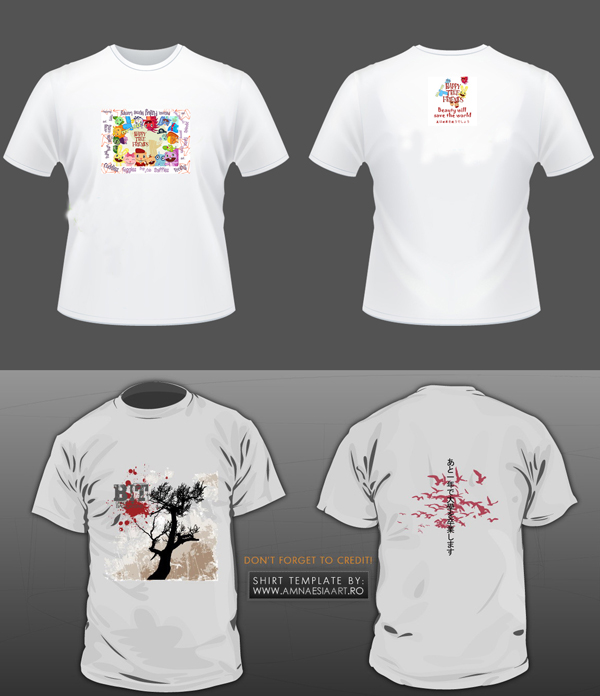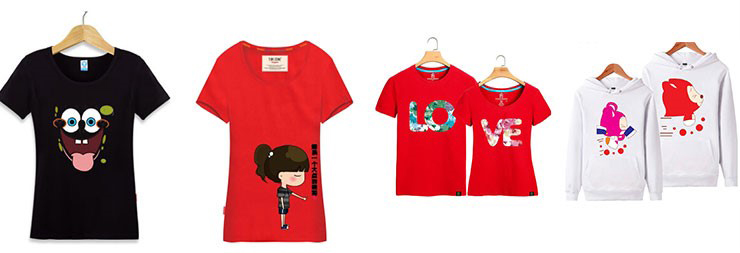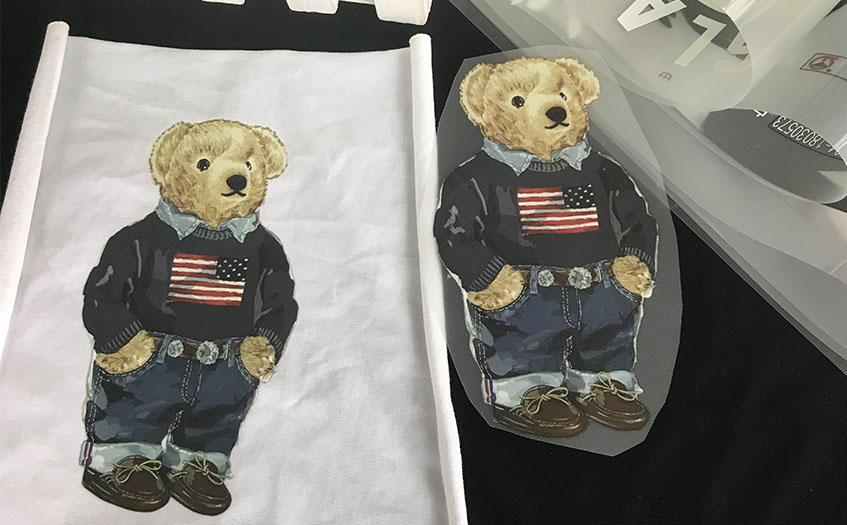Heat transfer is the process of combining heat with transfer media to create personalized t-shirts or merchandise. Transfer media come in the form of vinyl (a colored rubber material) and transfer paper (a wax and pigment coated paper). Heat transfer vinyl is available in a variety of colors and patterns, from solid colors to reflective and glitter materials. It is most commonly used to customize the name and number on the jersey. Transfer paper has no restrictions on color and pattern. Individual artworks or images can be printed onto media using an inkjet printer to make a shirt to your design! Finally, the vinyl or transfer paper is placed in a cutter or plotter to cut the shape of the design and transferred to the T-shirt using a heat press.
Advantages of heat transfer:
– Allows different customizations for each product, such as name customization
– Shorter lead times for smaller quantity orders
– Cost-effectiveness of small batch orders
– Ability to generate high-quality and complex graphics with unlimited options
Disadvantages of heat transfer:
– Large volumes of operation are time-consuming and costly
– It is easy to fade after long-term use and washing
– Ironing the print directly will ruin the image
Steps for heat transfer
1) Print your work onto transfer media
Place the transfer paper on an inkjet printer and print it through the software of the cutter or plotter. Make sure to adjust the drawing to the desired print size!
2) Load the printed transfer medium into the cutter/plotter
After printing the media, carefully load the plotter so that the machine can detect and cut the shape of the drawing
3) Remove the excess part of the conveying medium
Once cutting, remember to use a lawnmower tool to remove excess or unwanted parts. Be sure to double-check your artwok to make sure there's no excess left on the media and that the print should look like you want it on a t-shirt!
4) Printed on clothes
Interesting facts about transfer prints
As early as the 50s of the 17th century, John Sadler and Guy Green introduced transfer printing technology. This technique was first used in decorative ceramics, mainly pottery. The technology was widely accepted and quickly spread to other parts of Europe.
At that time, the process involved a metal plate with decorative elements carved into it. The plate will be covered with ink and then pressed or rolled on ceramic. Compared to modern transfers, this process is slow and tedious, but still much faster than painting on ceramics by hand.
In the late 2040s, heat transfer (a technology more commonly used today) was invented by a US-based company SATO.



Post time: Apr-23-2023

